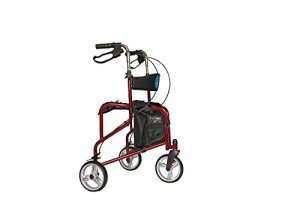Darryl님의 문의내용입니다.
-
작성자Darryl
-
조회수66회
-
등록일25-06-18 06:13
성함
Darryl
연락처
이메일
유입경로
인스타그램 인스타그램
주소
평형
공사시기
공간유형
상업공간
공사예산
4,000~5,000
문의내용

The Lightweight Walker: A Comprehensive Guide
Introduction
Lightweight walkers are essential mobility aids developed to assist people who have trouble walking or keeping balance. Unlike standard walkers, which can be troublesome and heavy, lightweight walkers offer improved mobility and ease of use. This article checks out the features, benefits, and numerous kinds of lightweight walkers available, making it a valuable resource for people looking for improved mobility, caregivers, and health care experts.
Comprehending Lightweight Walkers
Lightweight walkers are generally built from materials such as aluminum or carbon fiber. Their design prioritizes both toughness and ease of transportation and use. The development in engineering and manufacturing strategies has actually led to the development of designs that can be effortlessly maneuvered, making them appropriate for a broad series of users.
Key Features of Lightweight Walkers
- Material: Most lightweight walkers are made from high-strength aluminum or carbon fiber, making them easy to lift and transport.
- Foldability: Many models feature a folding design for convenient storage and transportation.
- Weight Capacity: Despite their lightweight nature, they are constructed to sustain significant weight while preserving stability.
- Adjustable Height: Most walkers provide adjustable height settings to accommodate users of varying heights.
- Brakes and Wheels: Some designs consist of wheels for increased mobility, in addition to brakes for safety when resting.
Here's a contrast table of some popular designs of Lightweight 3-Wheel Tri Walker with Seat & Bag walkers to help users make informed choices:
| Model | Weight | Weight Capacity | Features | Cost Range |
|---|---|---|---|---|
| Drive Medical 10210-1 | 5 pounds | 300 pounds | Foldable, non-slip hand grips, lightweight | ₤ 60 - ₤ 80 |
| Nova 4200 | 8 pounds | 250 pounds | 8" wheels, an integrated seat, and adjustable | ₤ 120 - ₤ 150 |
| Medline E0302 | 7 lbs | 300 lbs | Side folding, 5" wheels, and ergonomic grips | ₤ 70 - ₤ 100 |
| Hugo Folding Walker | 6 pounds | 300 lbs | Adjustable height, includes backrest seat | ₤ 80 - ₤ 110 |
| Mego Mobility Walker | 8 lbs | 350 pounds | Dual brakes, adjustable arms, inclusion of a basket | ₤ 90 - ₤ 130 |
Benefits of Lightweight Walkers
Lightweight walkers offer many benefits to users, boosting both mobility and quality of life. A few of the notable benefits consist of:
- Improved Mobility: They assist people ambulate safely and confidently, allowing them to take part in everyday activities and keep independence.
- Ease of Transport: The lightweight nature and collapsible style make them easy to transport in cars or public transport.
- Personalization: Many walkers permit for height modifications, guaranteeing a comfy fit tailored to the user.
- Improved Stability: These walkers provide the support essential to assist avoid falls and injuries, specifically in older adults.
- Range of Designs: With a series of designs readily available, users can pick walkers that best fit their personal choices and needs.
Kinds Of Lightweight Walkers
Requirement Walkers: Basic models designed generally for stability with rubber pointers, using stability however minimal mobility.
Two-Wheeled Walkers: Equipped with front wheels, these walkers offer enhanced maneuverability while still providing support.
Four-Wheeled Walkers (Rollators): These walkers include wheels on all four legs, making them much easier to browse over various surfaces. Many also include a seat, supplying rest throughout long trips.
Tri-Wheeled Walkers: Ideal for users who require more dexterity in tight spaces, tri-wheel designs are compact yet sturdy.
Picking the Right Lightweight Walker
When choosing a lightweight walker, consider the following elements:
- User's Weight and Height: Ensure the walker can accommodate the user's size efficiently.
- Planned Use: Understand where the walker will be mostly used (inside vs. outdoors) and choose wheels appropriately.
- Frequency of Use: For those utilizing the walker daily, comfort features, such as grips and seat options, might be required.
- Safety Features: Look for models with sufficient brakes or locking mechanisms to make sure stability.
Regularly Asked Questions
Q1: Are lightweight walkers more expensive than conventional walkers?A1: Generally, lightweight walkers can be somewhat more expensive than traditional walkers due to their sophisticated products and features, but they use substantial benefits in mobility and ease of use. Q2: Can I use a lightweight walker if I have considerable
mobility issues?A2: Yes, lightweight walkers are suitable for various mobility levels.
Nevertheless, it's recommended to seek advice from with a doctor or physiotherapist for tailored advice. Q3: Do lightweight walkers come with warranties?A3: Most respectable manufacturers offer guarantees, typically
varying from one to three years, however it's necessary to
inspect private product details. Q4: How do I keep my lightweight walker?A4: Regularly check for wear on wheels, brakes, and grips. Clean the walker with a damp
fabric and avoid direct exposure to extreme chemicals. Q5: Are there alternatives for personalizing lightweight walkers?A5: Yes, many manufacturers provide adjustable features such as color options, attachment of bags, and seat cushions . Lightweight walkers are important mobility aids that boost self-reliance readily available can assist users make notified choices. By selecting the ideal walker, individuals will find they can browse their surroundings with self-confidence and ease. As the population continues to age, lightweight walkers will remain essential tools for mobility, making sure that everybody keeps their flexibility to move securely and successfully.
, stability, and lifestyle for many people. Understanding the different functions, benefits, and types



